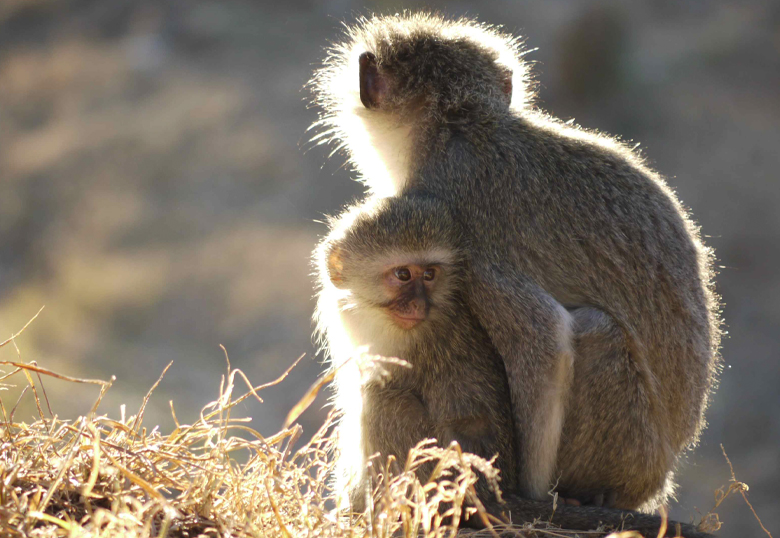Scientists have long understood the majority of primate births, including humans, occur during the inactive phase, or at night. In the wild it stands to reason, because the night offers the birthing mother decreased chance of predation, harassment from her companions and the need to keep up with a travelling group.

A new paper from a University of Lethbridge research team led by Drs. Louise Barrett and Peter Henzi (psychology) offers evidence of another evolutionary factor that favours nocturnal births. They argue the birthing process is enhanced at night because environmental conditions enable the mother’s physiology to cope more effectively with the changes in body temperature associated with giving birth.
“We already know we have this daily rhythm in our body temperature,” says Barrett, who along with researchers from Nottingham Trent University (UK) and the University of the Witwatersrand Medical School (South Africa), observed three groups of wild vervet monkeys on the Samara Private Game Reserve, Eastern Cape, South Africa for just over seven years. “We thought maybe this would be an advantage for these females if they were timing birth when their body temperature was naturally lowering anyway.”
As the birth experience expends an incredible amount of the mother’s energy, to use nature rather than direct physiological energy to lower and then raise body temperature, the mother is able to use that saved energy on her newborn.
The vervets were all implanted with data logging devices, allowing the scientists to track their core body temperatures throughout the 24-hour cycle. They logged non-maternal vervets’ temperature fluctuations and noticed a gradual decline in core body temperature at the onset of the evening and through the night before a similar rise following dawn. The maternal vervets saw similar fluctuations but over a much shorter window of time, the actual span of the birthing process.
“Growing a baby, going through a birth and then feeding a baby are very expensive activities physiologically,” says Barrett. “Anything that would save energy, such as tying the thermoregulatory process to the natural decline in core body temperature in the early evening hours makes sense and is worth investigating.”
In fact, the researchers were lucky enough to track a birth in the early morning hours, when the day is at its coldest, and recorded just how stark the temperature difference was on the mother and how much harder she had to work to get her core body temperature out of its near hypothermic state.
“When she gave birth in the early morning, her temperature dropped to 34 degrees, which is a significant drop (the mean low temperature for recorded nocturnal births was 35.9 degrees), so she would have had to work much harder physiologically to get back up to a normal range temperature,” says Barrett. “That’s energy she could have been putting into milk production and tending to her newborn.”
The study gives a fascinating look into the birthing process and further sheds light on why night-time births are not only more common for primates and humans alike, but why they may have evolved this way.
Link to paper: https://royalsocietypublishing.org/doi/10.1098/rsbl.2021.0574
